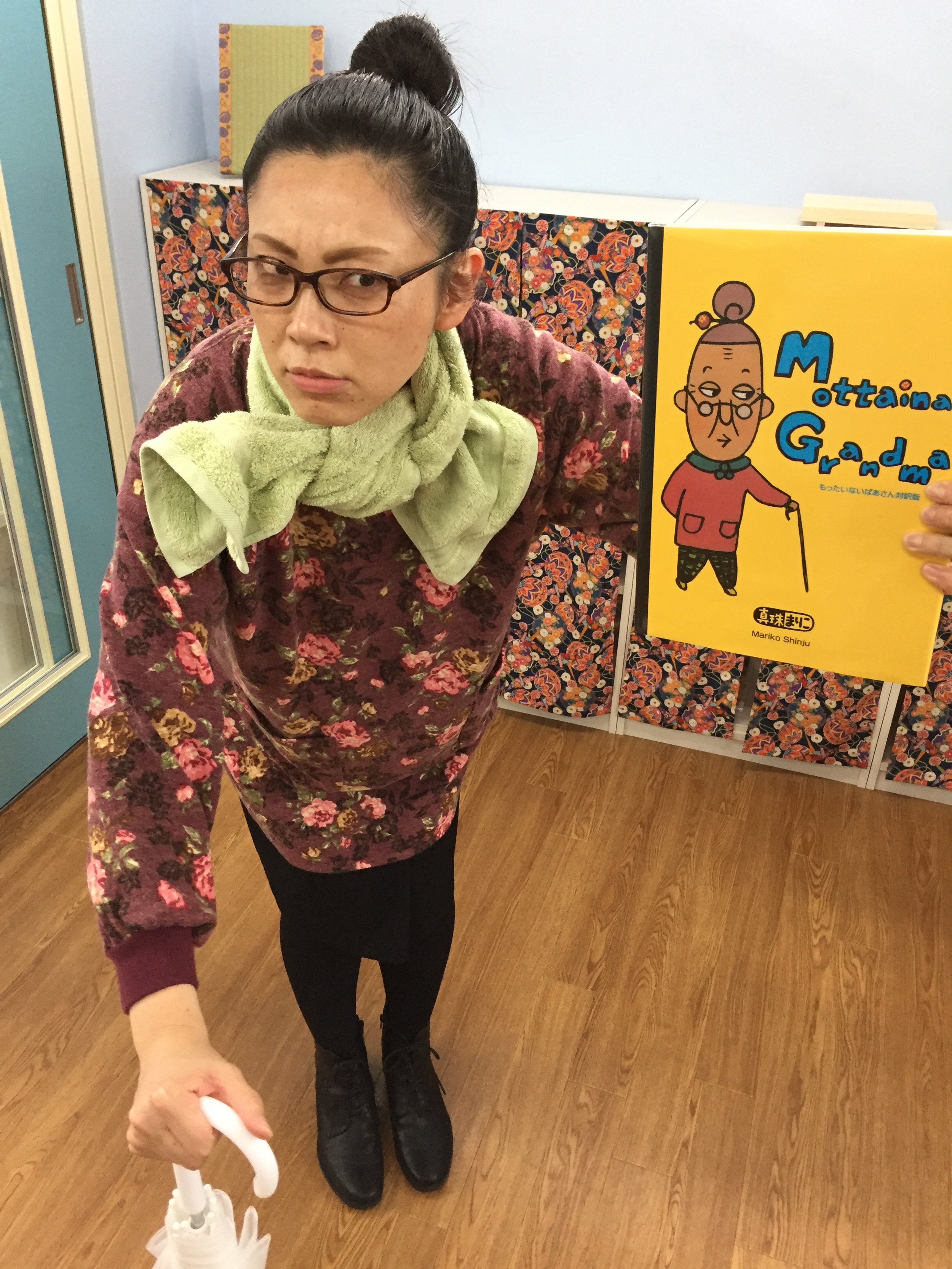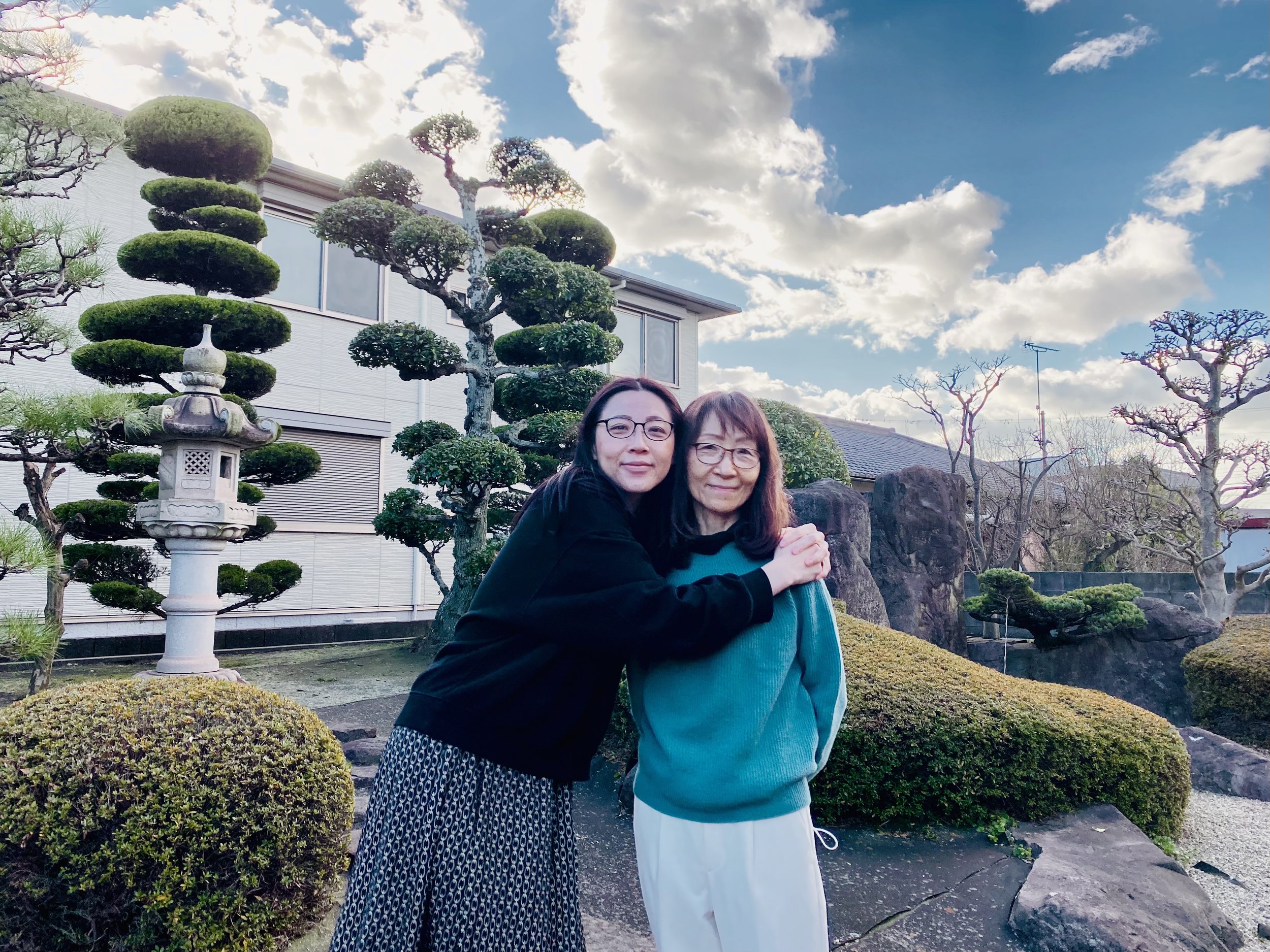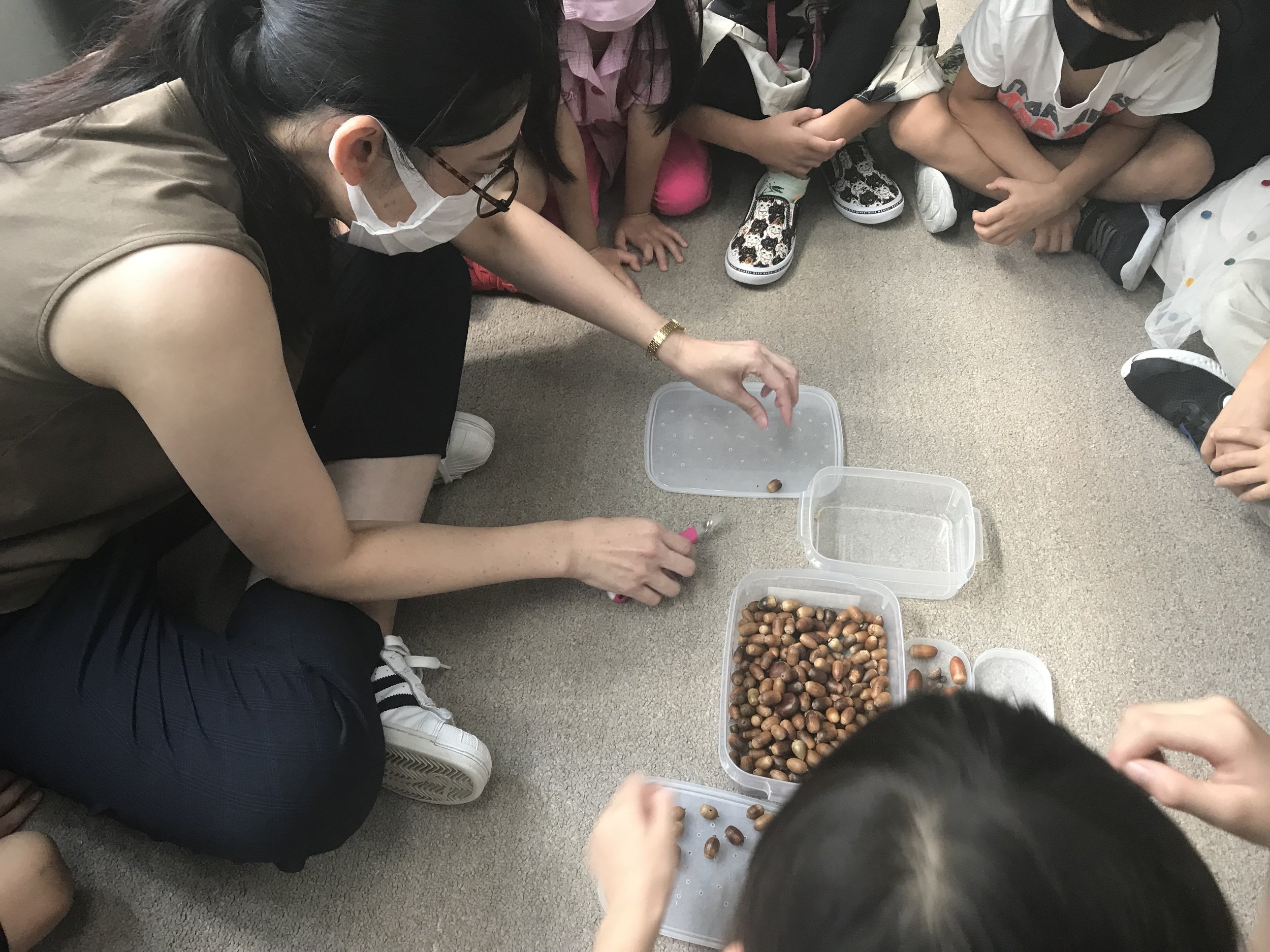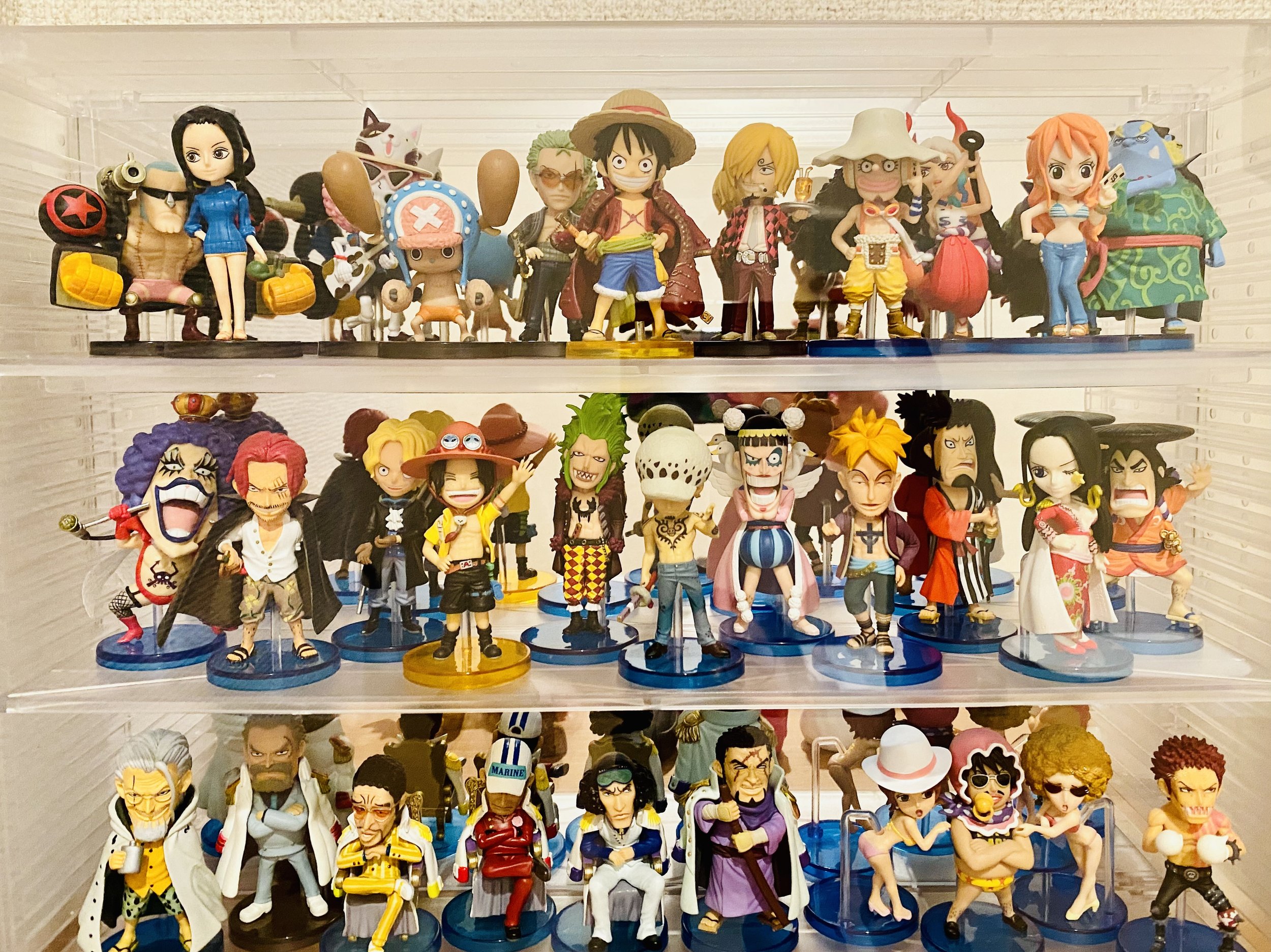Miho Nishita
PYP and MYP Japanese Teacher
Tokyo International School, Japan
How did you get into teaching?
Striking a character pose!
As a child, I envisioned myself as a flight attendant glamorously traveling around the world using my English. This wanderlust and strong interest in languages remained, even though the professional aspiration certainly morphed! I received a scholarship during university to study English in Australia. While there, I met a Japanese teacher who was teaching Japanese classes to Australian students who were brand new to the language. For six months, I closely observed her lessons and helped out in her classroom. Through her, I witnessed the power of not just teaching a new skill (language) but also of being a cultural ambassador! From there, my career path became clear and I pursued my degree in education. I learned about the International Baccalaureate during my practicum and was immediately struck by the power of inquiry-based methods. I wanted to be in a community that promoted them so I applied to PYP schools in Melbourne and was hired to teach at Wesley College. After teaching there, I later returned to Japan, seeking out positions in IB schools. I’ve been working at Tokyo International School for the past thirteen years now!
Who was the teacher who made the most positive impact on your life?
Me and my mum
Like other people interviewed for Inquiry Partners, I have to say it’s my own mom. What I do and how I perceive my life is heavily influenced by her. She was an extraordinary primary classroom teacher for 38 years in public schools with a lot of socioeconomic diversity. I remember, for one year, she made rice balls every morning for her student who was not able to get breakfast at home. In Japan, the homeroom teachers teach every subject - including PE! My mom always said that when she no longer teach PE, it’s time to retire (so she did…at age 60). She was always my role model - and still is to this day. I remember growing up and learning about her love and passion for the profession. We need to love our work and be passionate about what we are doing - otherwise, what’s the point?!
What is a professional inquiry you are currently pursuing?
“How do I help Japanese teachers understand inquiry when they have never experienced it themselves?”
This is my current and perennial struggle as an inquiry coach! In a culture that likes to follow procedures and use checklists, inquiry-based teaching can be tricky to teach. Inquiry requires precise language and definitions that are often hard to translate. I am the mediator! I’m the go-between and culture-breacher. As such, I make sure all IB slides are translated and, when I am asked, I will engage in demo lessons so inquiry isn’t so ambiguous. I try to bring inquiry to life by showing what’s possible inside the classroom so they can observe faces and body language - as well as hear the questions being asked and the activities used to ‘hook’ students and activate their prior knowledge.
What is a personal inquiry you are currently pursuing?
“How can I keep myself calm?”
Teaching is very active so at the end of the day I look forward to calming myself so I can sleep well. Yoga has helped me tremendously. I do yoga to pay attention to my physical body and to stop thinking about my teaching. During yoga, I can focus on breathing and stretching. During the school day lots of things happen and it’s hard to cut myself off from it when I get home. I refuse to be eaten by my occupation!
What three ideas do you have to improve the teaching profession?
1. Choose happiness. I always say “I choose to be happy. I choose to be positive.” This is my way of living. We can choose. So many unfortunate things will happen in our lives. Students do not want to study with unhappy teachers. We need to bring joy to our lives and our classrooms. My partner often reminds me that we will all die someday, and therefore perhaps the best way to live is to laugh a lot (and I do enjoy watching TV that makes me laugh), especially Japanese comedies such as:
Crazy Journey: https://www.tbs.co.jp/crazyjourney/
Matsuko no shiranai sekai (The world that Matsuko does not know): https://www.tbs.co.jp/matsuko-sekai/
Banana Sand: https://www.tbs.co.jp/banana-sand/
In this photo, I am cutting the acorn which has a small black hole in the shell to check if there is an acorn caterpillar inside. After reading a non-fiction book about acorn caterpillars, students wanted to check if what they read is correct. This was precipitated by my own inquiries and excitement!
2. Share your excitement about what you’re teaching. If we are not excited about our units of inquiry, our students are unlikely to be either. I developed a space exploration unit last year and was underscoring the concept of bias as students read about this field (guarding against misconceptions about space and tactics used to persuade audiences). I had to do a lot of research because, frankly, I didn’t know anything about space at the time (but watch out, I can talk about it now)! I followed my own lines of inquiry by reading non-fiction and manga and watching YouTube and anime about space exploration. Wealthy people in space is a fairly new business, too, so in this unit we also follow people like the Japanese billionaire Yusaku Maezawa who created his own YouTube channel about his obsession with space and adventures going into space.
3. Think about students’ learning first. This is always something important to do. As teachers, we have to consider many things and so it’s easy to forget about what we’re actually aiming for at the end of the day: our students’ learning. We have to think about lessons that work rather than what might be efficient or easy or fun. We don’t teach content; we teach students. For example, as a MS teacher, I have to schedule assessments. If I focus too much on the schedule, I run the risk of setting up students for failure because they aren’t ready. We should be flexible with our adult needs in service to what’s best for our students as much as possible; and simply prioritize their needs first.
You gotta see this!
My One Piece figurine collection
One Piece movie poster and a special movie comic
There’s been a great surge of global interest in animation and manga over the years. I’m so proud to be a part of this culture and you can see my pride literally on display in my home where I keep my favourite ONE PIECE characters figure collection.
Thank you, Miho!





